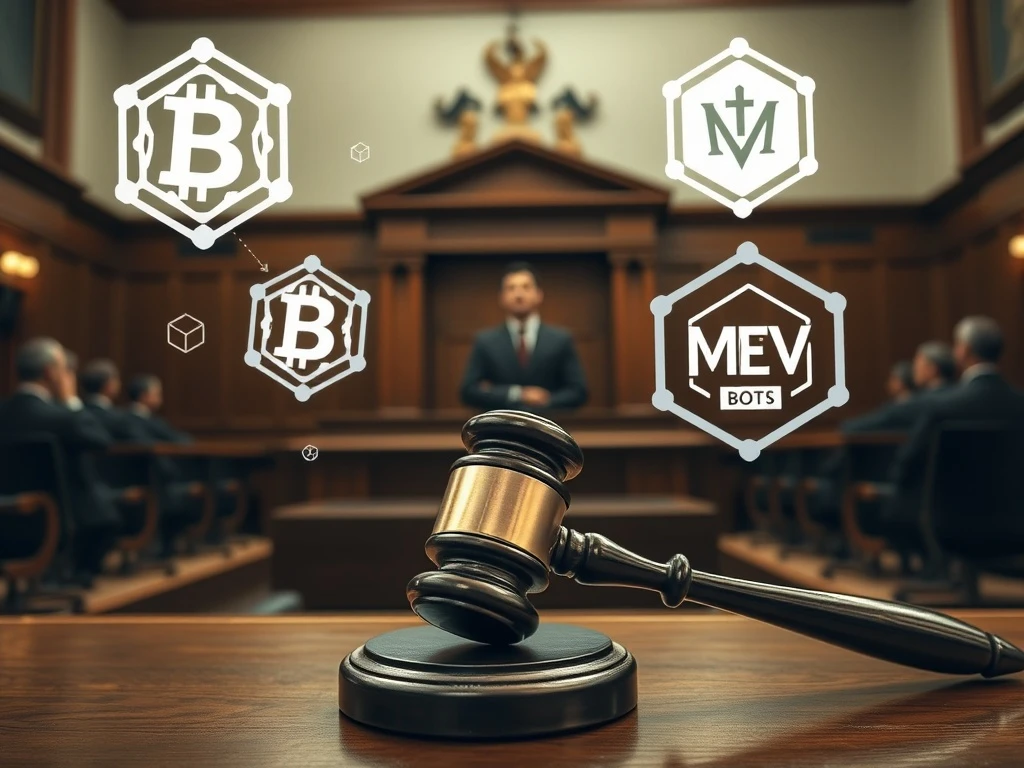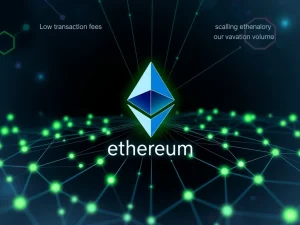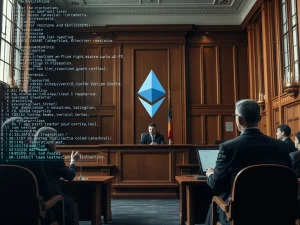MEV Bot Exploit: Unraveling the Peraire-Bueno Crypto Legal Battle in US Court

The cryptocurrency world watches intently as a landmark **MEV bot exploit** case unfolds in a US courtroom. This trial, involving brothers Anton and James Peraire-Bueno, could establish a crucial **blockchain legal precedent** for decentralized finance. The proceedings highlight the complex intersection of code, ethics, and traditional law within the rapidly evolving crypto landscape. This pivotal moment tests the boundaries of what constitutes an exploit versus a sophisticated trading strategy on the Ethereum blockchain.
The Alleged Ethereum Exploit Unfolds
Opening arguments in the criminal trial against Anton and James Peraire-Bueno began this week. The brothers face allegations of perpetrating a multimillion-dollar **Ethereum exploit** using maximal extractable value (MEV) bots. This alleged scheme resulted in approximately $25 million being siphoned from the Ethereum blockchain. The incident, occurring in April 2023, followed months of meticulous preparation. It reportedly involved targeting specific accounts utilizing MEV bots, extensive research into potential legal penalties, and detailed code analysis.
US authorities arrested the Peraire-Bueno brothers in May 2024. They now stand accused in a New York courtroom, presenting starkly different narratives. US government attorneys claim the brothers “tricked their victims” through a “high-speed bait and switch.” However, defense lawyers argue that the “victims here were sandwich bots.” They assert the brothers employed a legitimate, albeit aggressive, trading strategy. Therefore, they claim the profits were not illegal, thus precluding any money laundering charges.
Katherine Trefz, the defense attorney, stated in her opening arguments, “Yes, they off-ramped the crypto. They brought it into the US and paid tax on it: $6 million. Before they were arrested in their homes. This is a complicated case.” This statement underscores the defense’s position that the brothers acted within legal bounds, even declaring their profits to tax authorities.
Understanding MEV and the Peraire-Bueno Trial
Maximal Extractable Value (MEV) refers to the profit validators or miners can make by reordering, inserting, or censoring transactions within a block. MEV bots actively seek these opportunities, often through strategies like ‘sandwich attacks.’ In such attacks, a bot places a buy order immediately before a large legitimate trade and a sell order immediately after it. This action profits from the price movement caused by the larger trade. The **Peraire-Bueno trial** centers on whether the brothers’ actions transcended legitimate MEV arbitrage to become an illegal exploit.
The brothers each face serious charges. These include:
- Conspiracy to commit wire fraud.
- Money laundering.
- Conspiracy to receive stolen property.
If convicted, a judge could sentence them to up to 20 years in prison for each count. Consequently, the stakes are incredibly high, not just for the defendants but for the entire decentralized finance ecosystem. Many industry experts closely monitor the trial. They anticipate its potential impact on how the Ethereum network and other blockchains operate.
The Crypto Legal Battle: Code is Not Always Law
This **crypto legal battle** highlights the ongoing debate within the blockchain community: Is ‘code law’ in a permissionless system, or do traditional legal frameworks still apply? Evan Van Ness, chief investment officer of crypto company TXPool Capital, commented on the situation shortly after the brothers’ arrest. He noted, “I’m open to changing my mind but it seems [like a] pretty gray area to me.” Van Ness further explained, “Many MEV operators adopt the ‘all is fair in love and MEV’ mantra. And the brothers literally sandwiched some sandwich attackers?” This perspective suggests that the brothers might have simply outmaneuvered other bots, rather than exploiting human users.
However, Dankrad Feist, a researcher at the Ethereum Foundation, offered a contrasting view. Responding to Van Ness, Feist stated, “I think the charges make sense. They exploited a bug in a system for their own gain. Just because it’s a permissionless system doesn’t mean there are now [sic] rules. Code is not law.” Feist’s argument emphasizes that even within a decentralized system, actions causing harm or illicit gains can fall under existing legal statutes. This trial, therefore, serves as a critical test of this fundamental principle.
Setting a Blockchain Legal Precedent for the Future
The outcome of the Peraire-Bueno case will undoubtedly set a significant **blockchain legal precedent**. It will clarify the legal boundaries for MEV operators and developers interacting with decentralized protocols. The legal gray zones surrounding smart contract exploits and on-chain arbitrage demand clear definitions. This trial could provide those much-needed clarifications. It will likely influence future regulatory approaches to DeFi and blockchain technology. Moreover, it could impact how developers design and audit smart contracts, pushing for greater robustness against sophisticated attacks.
The trial was ongoing in the US District Court for the Southern District of New York at the time of publication. Both Anton and James Peraire-Bueno have remained free on bail since May 2024. Their fate, and potentially the future legal interpretation of on-chain activities, now rests in the hands of the US justice system. The crypto community awaits the verdict, understanding its profound implications for innovation and regulation in the digital asset space. This case underscores the growing maturity of the crypto industry, where systematic discipline is increasingly demanded over mere speculation.









